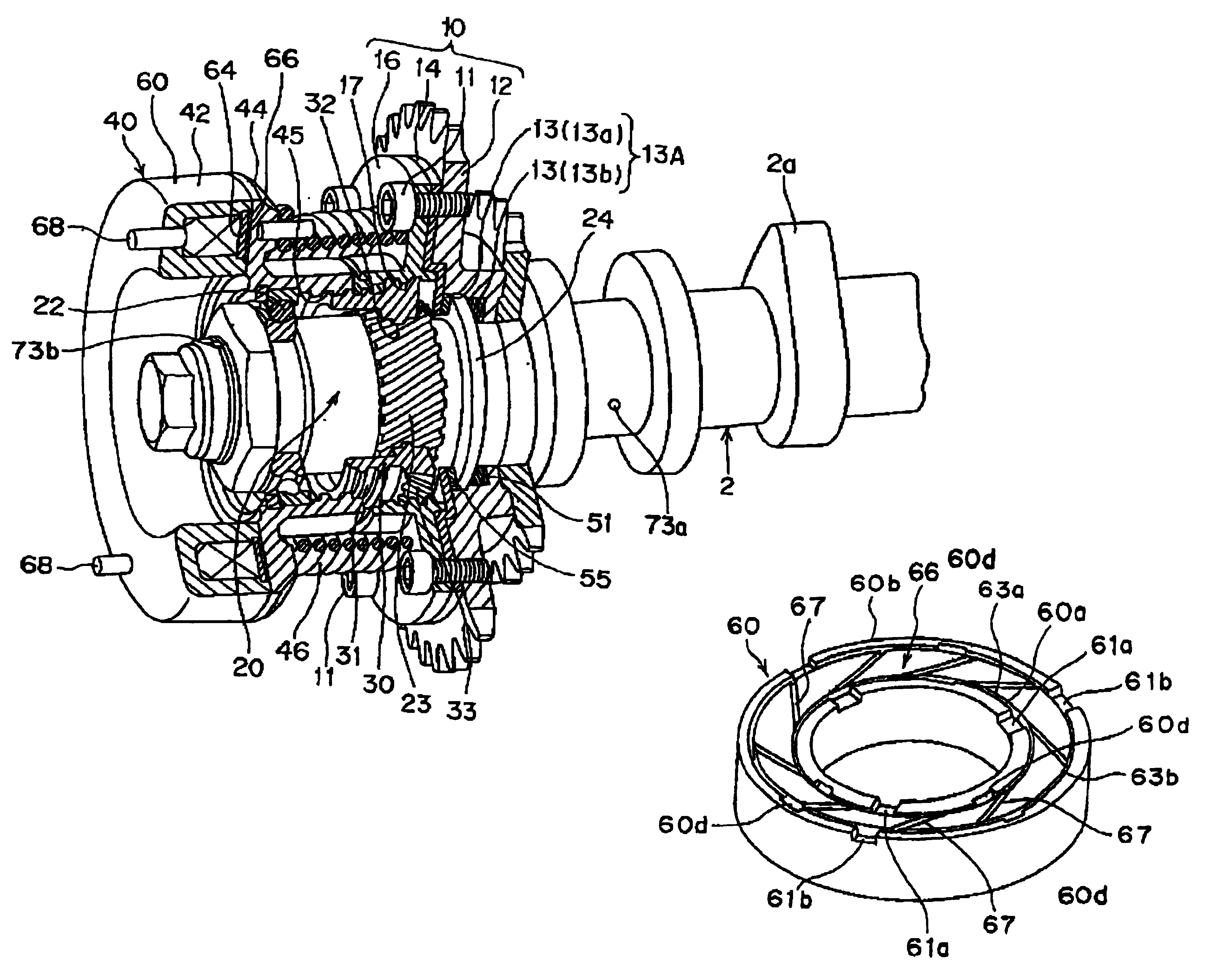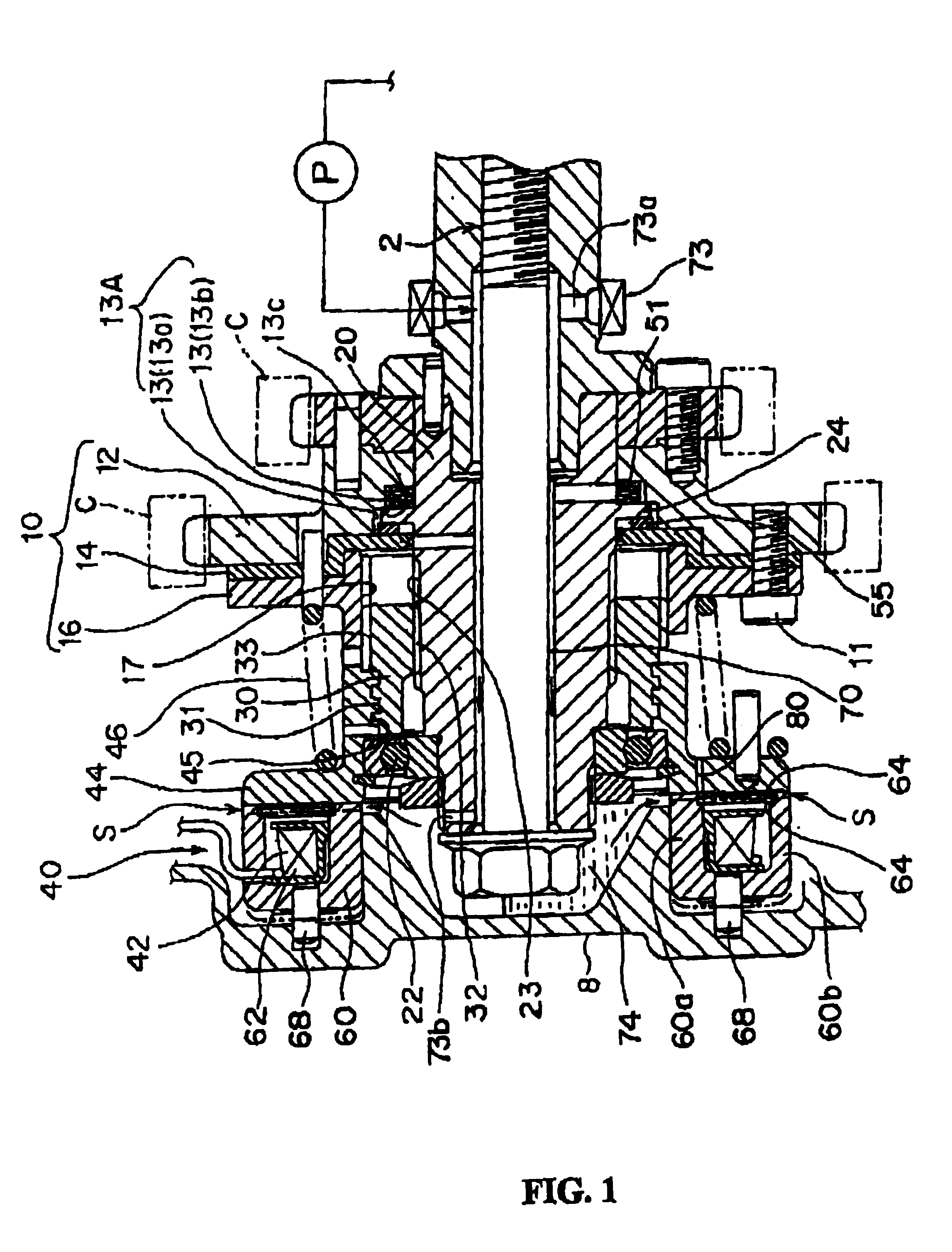Electromagnetic brake cooling structure of phase variable device in car engine
a technology of electromagnetic brake and cooling structure, which is applied in the direction of valve drives, braking discs, couplings, etc., can solve the problems of loss of frictional torque generated, and achieve the effects of good abrasion resistance, excellent durability, and large frictional (retarding) torqu
- Summary
- Abstract
- Description
- Claims
- Application Information
AI Technical Summary
Benefits of technology
Problems solved by technology
Method used
Image
Examples
second embodiment
[0063]In the second embodiment shown herein, the friction member 66A is made of a non-woven fabric of carbon fiber impregnated with a heat-hardening resin to form a porous member with more than 80 volume percent of all the pores having pore diameters in the range of 5-100 μm.
[0064]This porous member has large pores that are less likely to be clogged, and hence the friction member 66A has excellent durability. This implies that the friction member 66A can maintain a large frictional force (retarding torque) that act on the disk face of the rotational drum over a long period.
[0065]Formed in the surface of the friction member 66A are gridironed oil grooves 67a capable of supplying engine oil uniformly over the entire surface of the friction member 66A.
[0066]On the other hand, the rotational drum 44 is provided on the disk surface thereof with an annular oil passage 82. In addition, the oil passage 82 has a multiplicity of oil lead-out holes 80 which enhance faster flows of oil.
[0067]Ac...
first embodiment
[0069]This embodiment is the same in the rest of the structure as the Hence, further details of the like components will be omitted.
[0070]FIGS. 9 and 10 together show a third embodiment of a phase varying apparatus for use with an automobile engine. Particularly, FIG. 9 is a front view of an electromagnetic clutch, which is a main portion of the apparatus. FIG. 10 is a perspective view of a rotational drum, which is another main portion of the apparatus. Like components in the first and the second embodiments are identified by like reference numerals.
third embodiment
[0071]In the third embodiment shown herein, the friction member 66B is made of a non-woven fabric of aramid fiber impregnated with a heat-hardening resin to form a porous member with more than 80 volume percent of all the pores having pore diameters in the range of 5-100 μm.
[0072]This porous member has large pores that are less likely to be clogged, and hence the friction member 66B can create a large frictional force (retarding torque) that act on the disk face of the rotational drum. In addition, the friction member 66A has a good durability that it can maintain such large frictional force over a long period.
[0073]The friction member 66B is provided on the disk surface thereof with radial oil grooves 67b for uniformly providing engine oil over the entire surface of the friction member 66B.
[0074]Although the rotational drum 44 is provided on the disk surface thereof with an annular oil passage 82, it is not provided with oil lead-out holes such as ones 80 of the first and second em...
PUM
 Login to View More
Login to View More Abstract
Description
Claims
Application Information
 Login to View More
Login to View More - R&D
- Intellectual Property
- Life Sciences
- Materials
- Tech Scout
- Unparalleled Data Quality
- Higher Quality Content
- 60% Fewer Hallucinations
Browse by: Latest US Patents, China's latest patents, Technical Efficacy Thesaurus, Application Domain, Technology Topic, Popular Technical Reports.
© 2025 PatSnap. All rights reserved.Legal|Privacy policy|Modern Slavery Act Transparency Statement|Sitemap|About US| Contact US: help@patsnap.com



